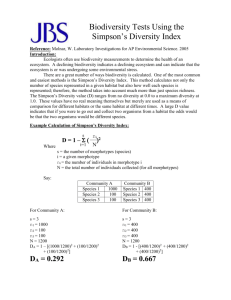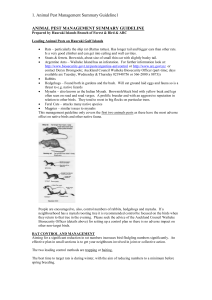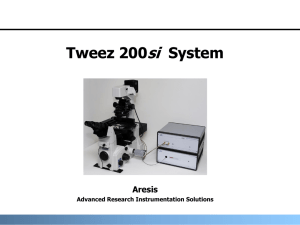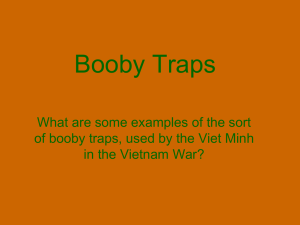Shannon- Weiner Index Lab
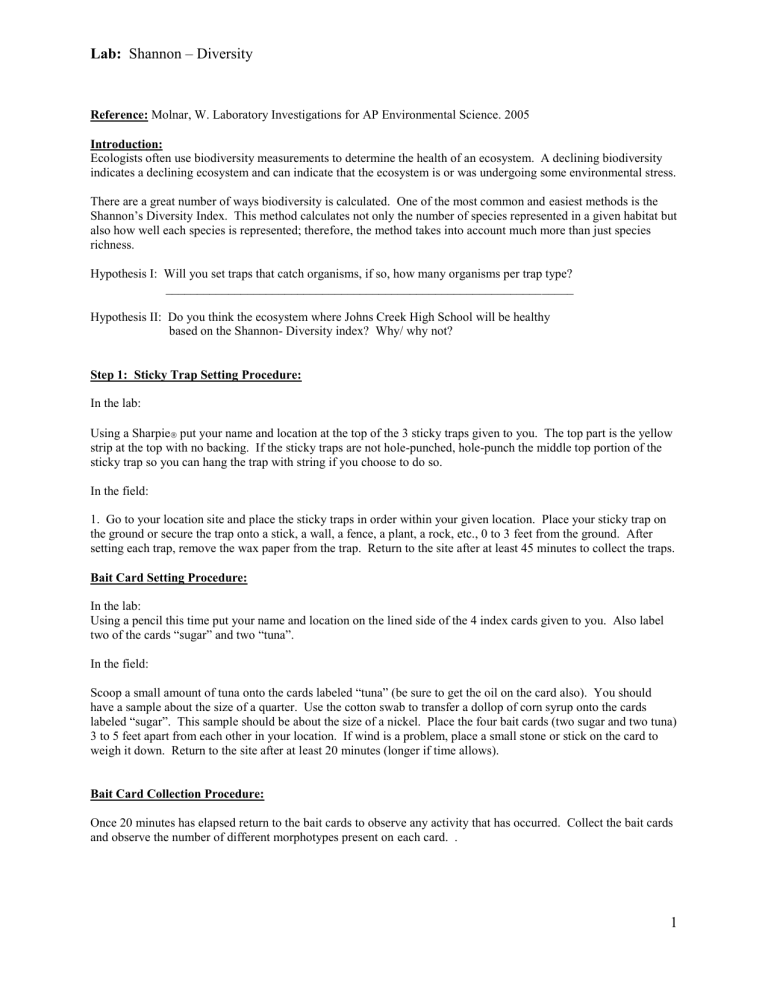
Lab:
Shannon – Diversity
Reference: Molnar, W. Laboratory Investigations for AP Environmental Science. 2005
Introduction:
Ecologists often use biodiversity measurements to determine the health of an ecosystem. A declining biodiversity indicates a declining ecosystem and can indicate that the ecosystem is or was undergoing some environmental stress.
There are a great number of ways biodiversity is calculated. One of the most common and easiest methods is the
Shannon’s Diversity Index. This method calculates not only the number of species represented in a given habitat but also how well each species is represented; therefore, the method takes into account much more than just species richness.
Hypothesis I: Will you set traps that catch organisms, if so, how many organisms per trap type?
_________________________________________________________________
Hypothesis II: Do you think the ecosystem where Johns Creek High School will be healthy
based on the Shannon- Diversity index? Why/ why not?
Step 1: Sticky Trap Setting Procedure:
In the lab:
Using a Sharpie put your name and location at the top of the 3 sticky traps given to you. The top part is the yellow strip at the top with no backing. If the sticky traps are not hole-punched, hole-punch the middle top portion of the sticky trap so you can hang the trap with string if you choose to do so.
In the field:
1. Go to your location site and place the sticky traps in order within your given location. Place your sticky trap on the ground or secure the trap onto a stick, a wall, a fence, a plant, a rock, etc., 0 to 3 feet from the ground. After setting each trap, remove the wax paper from the trap. Return to the site after at least 45 minutes to collect the traps.
Bait Card Setting Procedure:
In the lab:
Using a pencil this time put your name and location on the lined side of the 4 index cards given to you. Also label two of the cards “sugar” and two “tuna”.
In the field:
Scoop a small amount of tuna onto the cards labeled “tuna” (be sure to get the oil on the card also). You should have a sample about the size of a quarter. Use the cotton swab to transfer a dollop of corn syrup onto the cards labeled “sugar”. This sample should be about the size of a nickel. Place the four bait cards (two sugar and two tuna)
3 to 5 feet apart from each other in your location. If wind is a problem, place a small stone or stick on the card to weigh it down. Return to the site after at least 20 minutes (longer if time allows).
Bait Card Collection Procedure:
Once 20 minutes has elapsed return to the bait cards to observe any activity that has occurred. Collect the bait cards and observe the number of different morphotypes present on each card. .
1
Lab:
Shannon – Diversity
Sticky Trap Collection Procedure:
Once 45 minutes has elapsed return to the sticky traps to observe any activity that has occurred. Collect the traps and observe the number of different morphotypes present on each trap.
Species found by you from both the sticky traps and bait cards.
Group Data
Description of
Morphotype
Drawing
ID of Species?
Number of that species represented
2
Lab:
Shannon – Diversity
Class Data
Description of Morphotype
Location around school
ID of Species?
Number of that species represented
3
Lab:
Shannon – Diversity
Analysis:
1. Calculate the S, H, Hmax and E for data table.
2. Describe the biodiversity index of the group compared to the biodiversity index for the class.
Support your answer with data.
3. Describe the species distribution of the group to the species distribution for the class.
4. In your opinion, do we have a healthy ecosystem around Johns Creek High? Support your
answer.
5. In what way(s) would you improve the ecosystem around Johns Creek High School?
6. What type of bait would you recommend in the future?
Conclusion :
Please write a paragraph (5 sentences) based on the following
1. Were your hypothesis correct, why or why not?
2. What errors occurred and how would you improve them?
3. What recommendations do you have for students in the future?
4. Did you enjoy this experience, why or why not?
